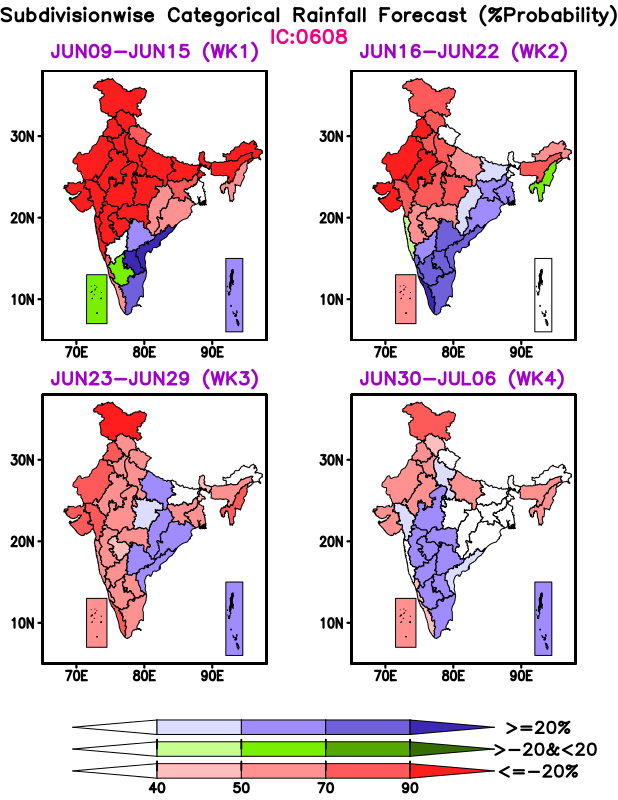INTRODUCTION
Under the National Monsoon Mission (NMM) Project (Rao et al., 2019) of the Ministry of Earth Sciences (MoES), the Indian Institute of Tropical Meteorology (IITM) started ERP efforts in 2011 by adopting the Climate Forecast System (CFS) from the National Centre for Environmental Prediction (NCEP), USA. An ensemble prediction system (EPS) has been developed for the ERP by using an indigenous perturbation technique (Abhilash et al. 2013), which was later developed into a multi-model EPS. Several post-processing techniques have also been developed to improve the prediction skill of extreme weather events (Sahai et al., 2017; Ganesh et al., 2018, 2020).
The EPS has remarkable skill in delivering an outlook on the intraseasonal fluctuations within the Indian summer monsoon, Madden-Julian Oscillation, heat/cold waves, cyclogenesis, and heavy rainfall events (Abhilash et al., 2013, 2014a,b,c, 2015a,b; Sahai et al., 2013, 2015a,b, 2017; Joseph et al., 2015a,b, 2016, 2019; Mandal et al. 2019; Dey et al., 2019; Ganesh et al., 2020), and this was adapted by India Meteorological Department (IMD) for operational purposes in 2016. Henceforth, these forecasts are used for generating the agricultural bulletins every week, which proved to be beneficial for farmers in increasing crop yield and choosing cost-effective crops (Chattopadyay et al. 2018). Health bulletins are also being generated by IMD using ERP guidance. An early warning system for the probabilistic prediction of vector-borne diseases has also been developed based on the ERP using AI/ML methods (Sahai et al. 2020).
In addition to these, efforts are now underway in generating the second-generation ERP (ERPv2) with a multi-physics framework for the improved prediction of the weather systems beyond 2 weeks (Sahai et al. 2021; Kaur et al. 2021). A competent set of physics pairs based on convection (simplified Arakawa Schubert SAS (Arakawa and Schubert 1974), revised SAS with modified shallow-convection (Han and Pan 2011), and microphysics (Zhao & Carr (Zhao and Carr 1997) and Ferrier (Ferrier et al. (2002)) schemes is selected to formulate a physics-based ensemble. The system with only control runs are showing great potential in the first three week leads. Therefore, for the ERPv2, we have three initial condition perturbed ensemble members (control + two) each for six multi-physics combinations, thus totalling 18 ensembles (3 initial condition perturbation X 6 physics perturbation). The experimental forecasts based on this new system, i.e., ERPv2, are now available and updated every Thursday on a real-time basis on this website, https://www.tropmet.res.in/erpas/.








